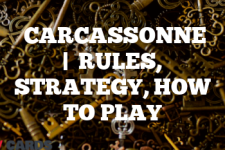25 Words or Less: Mastering the Art of Brevity in Gameplay
Introduction
25 Words or Less is a captivating word game that challenges players to use their vocabulary and quick thinking skills. The game is based on the principle of conveying a message using the least number of words possible. It requires a deck of cards, each containing a list of words, and a timer. The game is suitable for players aged 10 and above and can be played by two teams, each with at least two players. The objective of the game is to guess a list of five words using clues given by a teammate, all within a limit of 25 words.

Rules for playing 25 Words or Less
- Each team selects a clue-giver who will provide hints to their teammates.
- The clue-giver draws a card and reads the five words silently.
- Both clue-givers bid on the number of words they believe they can use to get their team to guess all five words on the card. The bidding starts at 25 and goes down.
- The team that bids the lowest number gets to play. If the team successfully guesses all five words within the bid number, they win the card. If not, the other team wins the card.
- The game continues until all cards are played. The team with the most cards wins.
While these are the official rules, players can introduce ‘house rules’ to add variations to the game. For instance, a time limit can be set for each round.
How to Win at 25 Words or Less
Winning at 25 Words or Less requires a blend of strategy, vocabulary knowledge, and understanding of your teammates’ thought processes. Here are some strategies for beginners, intermediate, and advanced players:
- Beginners: Start by bidding high and gradually lower your bids as you get comfortable with the game. Focus on giving clear and direct clues.
- Intermediate: Start incorporating synonyms and antonyms in your clues. Also, try to understand your teammates’ thinking patterns to give more effective clues.
- Advanced: Use your words wisely. Every word counts. Try to give clues that can apply to more than one word on the list. Also, pay attention to the other team’s bids and adjust your strategy accordingly.
Best Strategies for playing 25 Words or Less game
The best strategies for winning at 25 Words or Less involve efficient use of words, understanding your team, and strategic bidding. Here are some tips:
- Use concise and precise clues. Avoid unnecessary words.
- Understand your team’s knowledge base. Use words and references that your team will understand.
- Be strategic in your bidding. Don’t always aim for the lowest bid. Sometimes, it’s better to let the other team play and risk failing.
Scenarios for 25 Words or Less
There are various scenarios that players might find themselves in while playing 25 Words or Less. Here are some common ones and how to turn them to your advantage:
- Scenario: You’re the clue-giver and you have a difficult list of words. Strategy: Start with the easiest word to build your team’s confidence. Use synonyms and antonyms to give clues.
- Scenario: The other team has bid a low number. Strategy: Let them play. The pressure might cause them to make mistakes.
- Scenario: Your team is struggling to guess the words. Strategy: Change your approach. If direct clues aren’t working, try using indirect clues or references.
Frequently Asked Questions about playing 25 Words or Less game
- Q: Can I use gestures or non-verbal clues? A: No, only verbal clues are allowed.
- Q: What happens if we don’t guess all the words within the bid number? A: The other team wins the card.
- Q: Can we pass on a word and come back to it later? A: Yes, you can pass on a word and come back to it later within your word limit.
- Q: Can the clue-giver say part of the word as a clue? A: No, the clue-giver cannot say part of the word as a clue.
- Q: Can we use ‘house rules’? A: Yes, as long as all players agree to them before the game starts.
External Links
For more information, visit the official 25 Words or Less website here.

A digital native around since the early days of online gaming communities around 2001. An early contributor to the cult gaming site ClanTemplates, Adam has spent years giving free gaming resources to the community. With BoardCards, Adam is most experienced and commonly writing the articles on Strategy multi-player games like Settlers of Catan and Avalon. His first introduction to board games was via Mancala, an Egyptian-origin stone game and one of the oldest known games still played worldwide. Contact me via email



